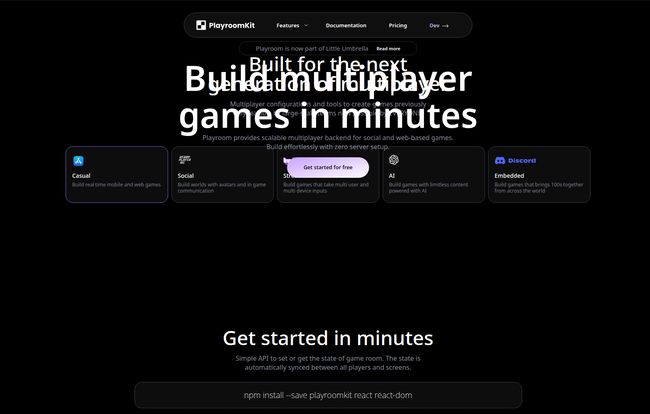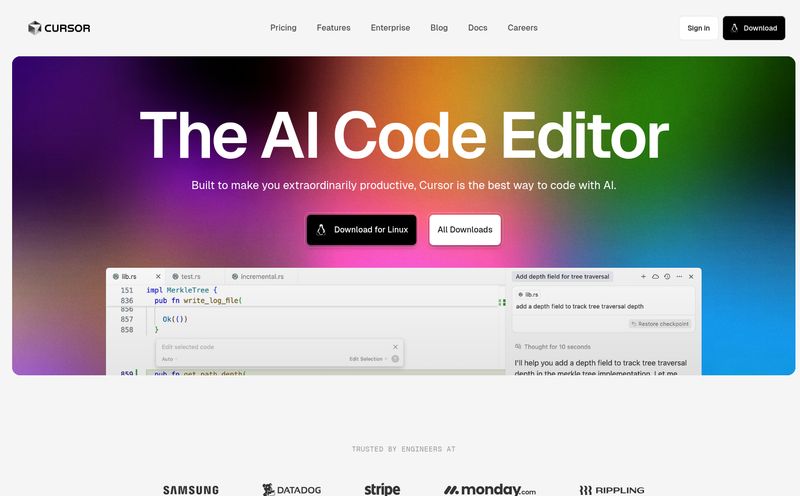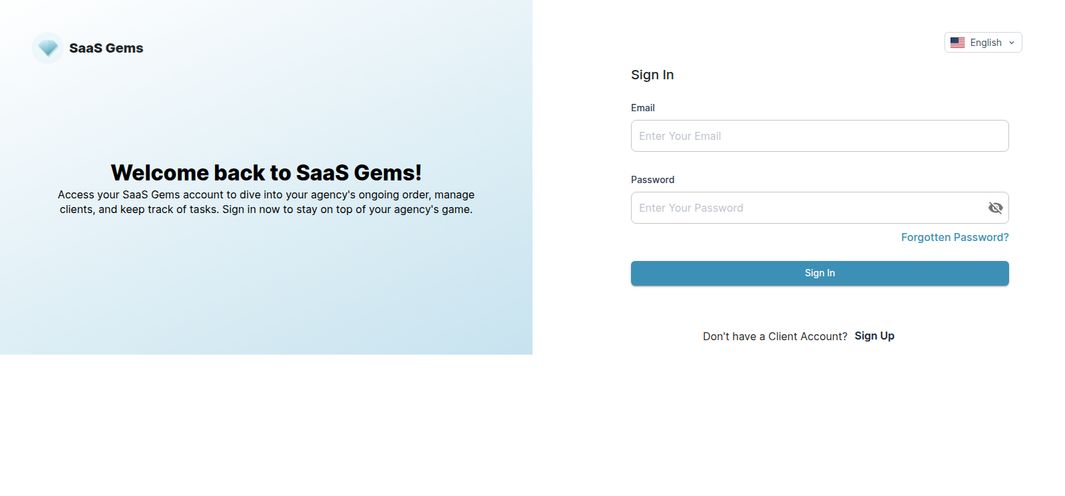I’ve been in the SEO and traffic game for years, but my first love was always a bit nerdier. I’m talking about building things. Little web apps, clunky games, you name it. And I have a very distinct, slightly traumatic memory of my first attempt at a multiplayer game. It involved countless late nights, a sea of Stack Overflow tabs that would make my browser weep, and a server that threatened to catch fire if more than two people joined at once. It’s a rite of passage for so many developers, that painful slog through networking code.
So when I see a tool that boldly claims you can build a multiplayer game in minutes, my inner cynic immediately raises an eyebrow. But my inner, sleep-deprived-from-that-first-project developer gets a little twinkle in his eye. That tool is Playroom, and I’ve been digging into it. The big question is: does it actually deliver, or is it just more marketing fluff in a very crowded market?
So What Exactly Is Playroom?
Let's get this out of the way. Playroom is a multiplayer backend specifically for web-based games. Think of it as the ultimate shortcut. It handles all the miserable, complicated server-side stuff—the stuff that makes you want to throw your laptop out a window—so you can focus on the fun part: actually designing your game.
The headline feature, the one they shout from the rooftops, is zero server setup. And for anyone who has ever tried to configure a Node.js server, manage WebSocket connections, and figure out how to scale it globally... those three words are like a siren's song. It’s designed to work with the tools you're probably already using, with support for game engines and libraries like Unity, Godot, Three.js, and React Three Fiber. It’s not trying to replace your game engine; it's trying to be its best friend.

Visit Playroom
How It Manages to Be So Fast
Alright, so “no servers” is a bit of a misnomer, of course. The servers exist, they’re just not your problem anymore. Playroom is essentially a Backend-as-a-Service (BaaS) that's been hyper-focused on gaming. Under the hood, it's a clever combination of technologies. It primarily uses WebRTC, which is fantastic for creating super fast, low-latency peer-to-peer connections. This is what gives you that snappy, real-time feel that's crucial for so many games.
But what if a player is behind a tricky firewall? Playroom has a fallback to WebSockets, ensuring a stable connection is almost always possible. The real magic, in my opinion, is the automatic global scaling. If your silly little browser game suddenly gets featured on a major blog or a streamer with 100,000 viewers picks it up, you don't have to panic. Playroom’s infrastructure is built to handle those spikes without you lifting a finger. It’s like having a team of DevOps engineers on call, 24/7, that you never have to speak to.
Features That Genuinely Make a Difference
A fancy backend is nice, but it's the quality-of-life features that really sell me on a platform. It's not just about what it does, but how easy it makes my life.
State Management That Doesn’t Cause a Migraine
The core of any multiplayer game is state. Who is where? What's their score? Who has the shiny sword? Playroom’s API for this is ridiculously simple. You define a state, and it automatically syncs it across all players. It’s like a shared Google Doc for your game's data. One player moves, their position updates, and everyone else sees it instantly. No more writing complex netcode to pass tiny data packets back and forth. Thank goodness.
The Built-in Toolkit
This is where Playroom starts to feel less like a backend and more like a complete development kit. They provide pre-built components for common multiplayer needs. We’re talking about things like:
- Joysticks: Instantly add a virtual joystick for mobile browser games.
- Lobbies: A system for players to gather before a match starts.
- Chat: A seamless in-game chat experience.
- Moderation: Tools to handle trolls and bots.
These are the things that can take days or weeks to build from scratch. Here, it’s more like snapping Lego bricks together. This massively lowers the barrier to entry, especially for solo devs or small teams participating in a game jam.
Let's Talk About the Price Tag
This is always the sticking point, isn't it? A great tool is only great if you can afford it. Playroom's pricing model is... interesting. It's based on Monthly Active Users (MAU), which has its pros and cons. Here’s a quick breakdown:
| Plan | Price | Key Features |
|---|---|---|
| Hobby | Free | Non-commercial use, no credit card required. Perfect for learning and jams. |
| Starter | $10 / month | 15,000 MAU, Unlimited CCU (Concurrent Users), Auto Scaling. |
| Studio | $150 / month | 200,000 MAU, Priority Support, cheaper overage rates. |
| Enterprise | Custom | 1M+ MAU, dedicated support, team features, the works. |
The Hobby tier is genuinely free and incredibly generous. It’s perfect for students, hobbyists, or anyone wanting to prototype an idea without financial commitment. The MAU model on the paid tiers means your costs scale with your success. Small game, small bill. Big game, big bill. This is great for cash-strapped indies. The flip side, of course, is that if you create a viral free-to-play hit with low monetization per user, you need to be very careful with your math. Your server costs could outpace your revenue.
The Good, The Bad, and The Serverless
No tool is perfect. Let's be real. After spending some time with it, here's my honest take.
The Things I Absolutely Love
The sheer speed of development is the biggest win. It's not an exaggeration to say you can get a multiplayer prototype running in a single afternoon. This is a massive deal for creativity. It lets you test ideas fast without getting bogged down in infrastructure. I also appreciate that it democratizes multiplayer development. You no longer need to be a backend guru to make a game for you and your friends.
A Few Things to Keep in Mind
The main consideration is vendor lock-in. You're building your game's multiplayer logic on Playroom's platform. Migrating a successful game off of it to your own custom backend would be… a significant project. You're trading some control for a massive amount of convenience. Also, the MAU pricing model, while fair, requires you to have a business plan if you intend to go commercial. You can't just release a game and hope for the best; you need to project your user count against your potential revenue. Its a necessary evil of the model.
Frequently Asked Questions about Playroom
What kind of games can I actually build with Playroom?
Pretty much any web-based game. The low latency makes it great for real-time games like .io style games or casual action titles. It's also perfectly suited for turn-based games, puzzle games, board games, and even live experiences integrated into streams.
Do I need to be a backend expert to use this?
Absolutely not. That's the whole point! If you have basic JavaScript knowledge and can follow their documentation, you can create a multiplayer game. You don't need to know anything about servers, databases, or network protocols.
Is the 'Hobby' plan really free? What's the catch?
Yes, it's genuinely free. The only 'catch' is that it's for non-commercial projects. You can't run ads or sell items in a game using the free tier. But for learning, building a portfolio piece, or participating in a game jam, it's 100% free with no strings attached.
How does MAU pricing work if my game goes viral?
Your costs will scale with your user base. The Starter plan includes 15,000 MAU, and you pay a small amount ($0.003) for each additional user. If your game truly explodes, you'd likely move to the Studio or Enterprise tiers, which offer better volume pricing. It's a good problem to have, but one you need to plan for!
Is Playroom scalable enough for a hit game?
Yes. The platform is built for automatic scaling. A sudden influx of thousands of players is handled by their infrastructure, not yours. That's one of the core value propositions—you don't have to worry about your game's success crashing your servers.
My Final Verdict: A Powerful Tool in the Right Hands
Look, the internet is littered with tools that promise to make development easier. Most of them are just okay. Playroom feels different. It tackles one of the single biggest hurdles in indie game development—multiplayer networking—and turns it into a trivial task. It effectively kicks the door down for countless creative ideas that would have otherwise died on the vine of technical complexity.
Is it the perfect solution for every game? No. If you're a massive studio with a team of networking engineers building the next World of Warcraft, you'll probably roll your own solution. But for the solo dev, the small studio, the game jammer, or the creative coder who just wants to build something fun with friends? Playroom is, without a doubt, a game-changer. It lets you skip the boring part and get straight to creating.



